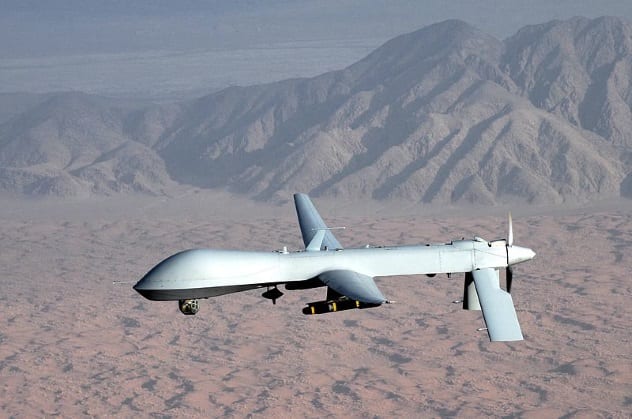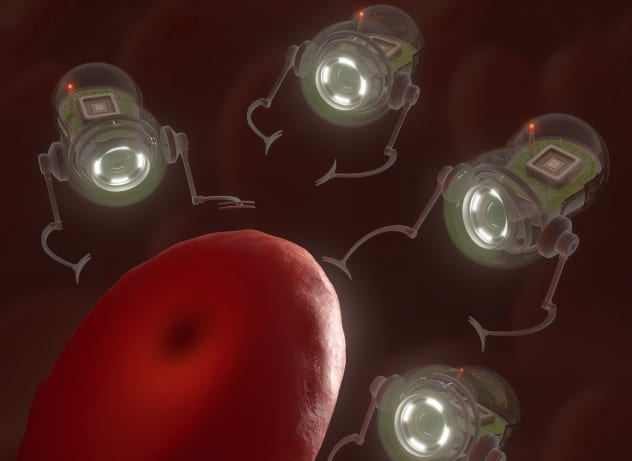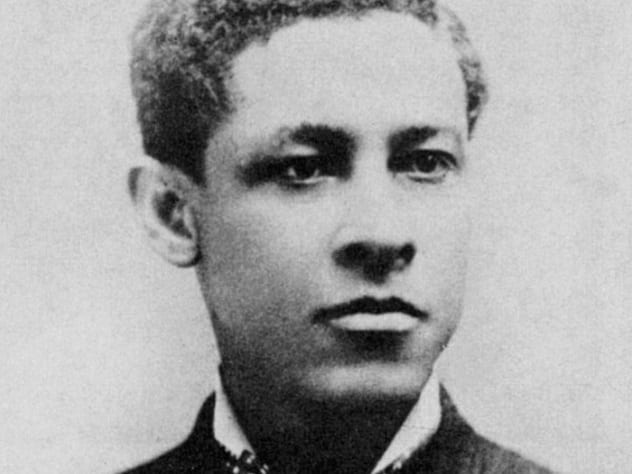It wasn’t always like this, though. The rest of the civilized world owes a great debt to the United States for showing them the path in the dark, even when they didn’t mean to. Their inventive ways of killing each other and turning a quick buck are truly an inspiration to all those people who live in the lands they haven’t yet colonized with airbases, bombed into oblivion, or exploited the natural resources of to the point of total environmental collapse. On the upside, we now have the Superbowl, assault rifles that aren’t assault rifles, and bowls of chili that are made of tortilla, which you eat after the chili, and it’s deep-fried in cheese or something. It’s quite a thing; you have to see it.
10 The Washing Machine Gave Women Equal Rights
Do you know who the great hero in the story of women’s liberation is? No, not Andrea Dworkin or the suffragettes. The real hero is a man, of course. In 1851, James King invented the first washing machine.[1] That might not seem like a big deal for women’s liberation, but it is. Considering the number of hours saved over the century that followed, it is indisputable that the washing machine had as great an effect on the liberation of women as the birth control pill. With less time required to perform domestic chores, by 1950, 42.9 percent of women aged 16 to 24 were in the workforce, as women began to take their place in a more time-equal world. The daughters of these women would benefit both from work and the contraceptive pill, so we have the situation today where women can complain about not being represented in STEM fields while choosing careers in Gender Studies. Equality, America!
9 Military UAVs
The Predator UAV is one of the great humanitarian inventions. Not only is the development of this technology a huge leap forward in terms of reducing risk to soldiers, but over time, it has developed into an effective method of reducing noncombatant casualties also.[2] While we read about collateral damage, the alternative would kill even more—and put US military lives at greater risk. The problem with air support on the modern battlefield is twofold: Firstly, most civilian casualties occur during rapid response support of infantry who come under attack, due to a lack of advanced planning on the side of the US military as well as “the fog of war.” The second factor is that pilots are told to remain at altitude to avoid return fire. An F-15 is expensive to buy, operate, and lose, not to mention the risk to the pilot. A pilot standing by at 4,600 meters (15,000 ft) cannot discriminate between hostiles and civilians caught up in the crossfire. Enter the Reaper UAV, flying low with high-resolution cameras. Civilian lives are preserved at higher rates than ever before. Plus, it has got to be so incredibly annoying to be killed by a robot. I can’t even imagine how stupid you must feel. In your face, Jihadi John.
8 An American Mistake Changed British Culture Forever
More famed for being tea terrorists, the Americans actually “invented” the tea bag, possibly as an apology for being in the wrong during the War of Independence. Although, of course, the Chinese had been using tea bags for centuries, it was a chance of fate that an American merchant sent samples of tea in silk packets—which were then dunked into boiling water by mistake.[3] In any case, the invention changed the lives of millions of Englishmen, allowing tea to be truly portable and thus drunk on building sites, in mines, and while fighting Argentinians over small pieces of rock. Up until the popularization of the tea bag, tea was a strictly breakfast or evening drink. The revolution of tea bag technology emancipated the working class from being drunk all the time, and a national stereotype of tea drinking was further enhanced. Thanks, America!
7 Duct Tape
There are huge lists of lifesaving uses for duct tape,[4] which we’ll not go into; the anecdotal evidence is ample. From the time of its invention in World War II all the way to that bit in Aliens where Ripley duct-tapes a flamethrower to a pulse rifle, duct tape has been a staple tool in reality and fiction. You might remember from the Apollo 13 story that duct tape saved the day. The legendary material was even un-mythbustable by a TV show specializing in busting myths. Your dad swore by it, and now, so do you. Remarkably for what began as 1940s “future-tech” for the US military, it has not been superseded by any modern invention. Of course, with technology that is so brutally effective as duct tape, one must exercise caution. In March 2003, following advice from the Department of Homeland Security, three people died of suffocation after duct-taping themselves inside their homemade safe room against potential chemical attacks. Carbon dioxide is a chemical weapon too, kids. One only needs two tools in life: WD-40 to make things go, and duct tape to make them stop. –G. Weilacher
6 Public Relations
Ed Bernays said it best on his invention of public relations when he called it “the engineering of consent.” It was Bernays who swung the public’s opinion in favor of the US entering World War I, and he was also behind the manipulation of fashion . . . in order to get more women to smoke. As you see from these two examples, propaganda, public relations, and fake news are one, the same, and amoral. They are also essential aspects of living in the modern world. We can easily say that all this lying in the media is counter to a free society, but it has also literally saved the lives of thousands (if not millions) of people. For example, for every Benghazi or Pizzagate scandal, there are the PR moves to encourage more people to sign up for clinical trials for drugs to combat depression-related suicide.[5] And who can forget the public relations campaign in 1974 that prevented car safety belts from being scrapped? The subtle arts of PR go hand-in-hand with the brash proclamations of Trump or narrative-shaping of CNN. It’s not a clean business, but it’s fundamental to our way of life.
5 Smart Dust
Nanotech is here to stay. Thanks, America, for making all our futuristic cyberpunk dystopian fantasies a little bit closer to becoming reality. Could you imagine living in a world where there was zero chance that an unstoppable microscopic technology could go haywire and reduce the entire planet to gray goo? Not us. No way. On the upside, provided Smart Dust doesn’t end all life, it could be the very thing that saves planet Earth from humanity as we find applications for these machines in monitoring pollution, providing accurate advance warning of forest fires—and even internally monitoring our own health.[6] As the tech improves, it’s indubitable that both challenges and opportunities will present themselves to us. If the history of other recording hardware tells us anything, it’s that the first one who learns how to use them to film porn will be very rich indeed.
4 Nuclear Weapons
You, of course, know the story that the United States was fearful of taking Japan in an amphibious assault due to the fanaticism of the Japanese, and that’s why nuclear weapons were deployed. Of course, as with most things you were told in school, that is a falsehood.[7] Little Boy and Fat Man did about as much good for the US war effort as half a roll of quality duct tape. The real reason for dropping nukes on civilians was to stave off the encroaching Soviets, who would begin their conquest of Manchuria on the same day as the destruction of Nagasaki and were in a far better position than the Americans to stage an invasion of Japan. Not only did nuclear weapons prevent Japan from becoming a satellite communist state with no anime or Godzilla, but it also allowed for the rebuilding of Japan along capitalist lines, leading to the development of a technological, world-beating nation, instead of a rice field with a gulag on it. All this, and we didn’t even mention the mostly clean and safe energy produced by nuclear power, a direct result of the science that went into melting two cities in order to scare communists. Yay, nuclear weapons!
3 Blood Banks Saved Britain From The Nazis
Dr. Charles Drew should be world-famous, but as with most of the things we take for granted, he’s just a footnote in history. If you’ve ever had a blood transfusion and weren’t directly siphoning your sanguine sangria out of a pig or a dog like someone who doesn’t understand what blood is for, you owe Drew. His life story makes you wonder how it hasn’t been repackaged and exploited by whoever the young Denzel Washington is these days. Fighting against the segregated society of his day, Drew was not only a great football player, but he was also smarter than most rooms full of people combined. During World War II, he applied his medical doctorate to the problem of British people bleeding everywhere after being bombed—and American blood being too far away. The result was a technique to extract plasma from donated blood and transport it across the Atlantic, along with complex work on shock management that is still applied today.[8] Drew also invented the “bloodmobile,” which is the precursor to transplant transportation technology used today. If you don’t feel inferior to him enough after reading this, Drew spent the last nine years of his life fighting segregation and training African American surgeons because nothing gives the finger to racist cultures than literally saving their lives and being smarter than everybody else.
2 A 19th-Century American Shoemaker Changed 21st-Century Asia
Useless fact: 87 percent of the world’s shoes are made in Asia. A useful result of this fact: The shoe industry provides jobs and wealth to millions of people, resulting in a plummeting number of people living in poverty across the continent. While well-meaning people decry the sweatshops of Asia as being exploitative, the opportunity to work in these selfsame factories freed people from subsistence farming and in many places, famine. Two dollars a day isn’t a lot in the West, but it can be the difference between your child going to college one day or starving in a field in the East. So what does America have to do with all this? In 1883, Surinamese immigrant Jan Matzeliger patented an invention that changed the face of the planet. He did this by putting a highly skilled, highly waged sector of society out of work forever, and this is why you no longer know of people taking jobs as “hand lasters.” Putting the top part of a shoe onto the sole is a difficult job by hand, and a master laster could last 50 pairs of shoes a day. Matzeliger not only made a machine that could do the job, but that machine was far more efficient: producing up to 700 pairs of shoes a day.[9] Doing away with the highly skilled craftsmen required not only enabled poor Americans to afford shoes for the first time but made shoemaking a low-skill job. Matzeliger provided the industrializing spark of genius that eventually formed the backbone of the tiger economies.
1 The Invention Of Modern Dry Cleaning Helped End Slavery
No matter how many times we’re told it took a war and good Christian abolitionists, one of the real heroes and precursors to the Emancipation Proclamation was Thomas Jennings. A free black American born at the end of the 18th century, he was the first non-white to register a patent. As the antebellum US was some way off from treating all men as its Constitution suggests, slaves were not allowed to register patents, all their labors being the property of their masters. Jennings, already free, was allowed to file his (since lost) patent for “dry scouring,” which is thought to have been some form of chemical treatment.[10] Whatever the exact method, Jennings became rich from it and used his wealth to buy freedom for his family and fund abolitionist causes, serving himself at the First Annual Convention of People of Colour in 1831. Victory for civil rights, capitalism, and clean clothes—the true meaning of freedom and the American Dream, I’m sure you’ll agree. Read More: Twitter Wordpress
























